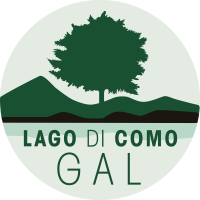Lake Como GAL's project for the rediscovery and enhancement of the Larian mountains.
OltreLario takes the traveler to discover what the slopes around Lake Como have to tell: stories and anecdotes, which are passed from the local community to the traveler through travel experiences, intersecting nature, culture and crafts.
Credits MAURIZIO MORO / BARNI
The landscapes are designed by the evidence of local cultural tradition: terracing, dry stone walls, mills, hammers, factories, spinning mills. Nature then went to great lengths to create areas of exceptional beauty, such as the mushrooms of Terra in Triangolo Lariano and the breathtaking sheer views of the Lario. Nature and its representations have been a source of inspiration for painters, such as Eugenio Spreafico and Giovanni Segantini, who have graced European churches and villas for centuries.
Every aspect of the Larian Mountains territory is told, brought to light, in a constant journey on foot and by bicycle. Two means, these, that open the door to a different way of experiencing time, a slow and generous time that allows the rural territories to be savored to the fullest. OltreLario is committed to conveying the beauty of pedaling, walking and slowing down in order to let people discover a hidden and little-visited territory, but rich in experiences.
Credits ELEONORA GINI
OltreLario is an immersion into the places of the Larian territory.
We walk and pedal to discover and intercept what is hidden. Let us search, delve into the territory of the Larian Mountains and find moments, ravines, wonders with which to marvel. We probe the heights, forests, pastures, glacial moraines and caves; we discover the flora and fauna that make the territory alive. We enter villages by knocking, metaphorically, on doorways set in granite portals to discover peasant courtyards with wooden lobbies.
The driving force of water channeled by man to transform nature's gift into a means of livelihood: mills, workshops and spinning wheels. Do you hear the spinning wheels singing? Slender golden threads that sprang from cocoons embedded in twigs of rapeseed.
Historic fishing families laying nets in the waters of the lake, in that world far from shore-silent and deep-a world of days upside down and men sitting on the docks in the late afternoon repairing nets. Nets that were dyed in a great community moment with water colored by chestnut husks. Same lake, different craft: boats spun slow and silent on the waters. Four rowers in a boat with the stern keel cut off so as not to be harpooned by financiers. An accomplice shipwright.
In our hikes we encounter the force of nature manifested by the presence of erratic boulders. Scratched boulders, scratched to define boundaries and legends, to be broken for cutting material, to enter history as parts of dry constructions: mastery of the "piccaprèia," architecture that dominates the mountainous areas of Lombardy.
Erratic boulders, called trovants, like foundlings scattered among the mountains, became avelli: tombs dug into the erratics and destined for high-ranking figures between the 5th and 6th centuries AD represent a singularity from Brianza to Valtellina.
Village traditions that the traveler will be able to relive together with the community: the "Giubiana da Canz" "l'ültim giuedì da Genar," the Carnival of Schignano in February, the "donkey invasion" in Dizzasco in August, the Goat Fair in Caslino d'Erba in September.
Stories, many stories, traceable to travel experiences that the visitor can undertake in the OltreLario.
cREDITS GIOVANNI APPIANI / Orimento
LAKE COMO GAL
Lake Como GAL represents the local community as a whole by bringing together local authorities, business groupings, cultural, environmental and landscape associations.
Lake Como GAL is a limited liability consortium company that deals with the development of the rural territory of Triangolo Lariano and municipalities located in the Brianza belt. It acts through the implementation of the Local Development Plan and finances with European funds projects related to agricultural, forestry, tourism and social issues. The LAG has the opportunity to operate directly in its territories with Leader cooperation projects, through which, in co-partnership with other Italian and European LAGs, it draws up local development strategies to promote territorial peculiarities.
cREDITS ENRICO COLZANI / FAGGETO LARIO

